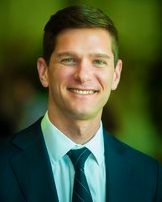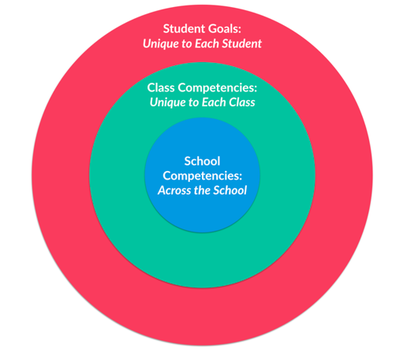 Brad Rathgeber Brad Rathgeber In my last two posts, I’ve written about the two core competencies at One Schoolhouse: engaging constructively in a diverse and changing world; and, gaining academic maturity. These two competencies form the foundation for competencies that students work to complete in each course – these competencies are the promise that One Schoolhouse works to deliver upon for each student enrolled, regardless of course taken. What I haven’t written about are the two additional layers of competency work beyond school-wide competencies. We like to think about our work in competencies as a bullseye. School competencies form the center of the work – they are central to our program and worked at in each course. In addition, teachers build competencies for each class—areas of focus for development that are central to the study and successful ability to apply learning in that course. This level of the bullseye is unique to each course. And, the outer layer represents the goals that each student brings to the program – you may remember that earlier this summer I wrote about the importance of student goal setting. To help bring this to life, let’s look at what this bullseye looks like in for a student in a course: Student Goal This one comes from a student in our macroeconomics course: My goal is for this course to help me in my passion of politics. This can be measured by the information connections I am able to make, the real life applications I can use, and my full understanding of the economics knowledge itself. I believe that this goal will help me in my future career goal as a member of the Department of State because I will be able to understand how economics influence countries. Course Competencies This one comes from our statistics course: Gaining fluency in the use of data. Students explore data by describing patterns, departures from patterns, and anticipating patterns through analyzing and designing studies, simulation, and creative problem solving. Testing ideas and hypotheses. Students plan, design, and conduct studies through sampling and experimentation. Estimate population parameters and test hypotheses drawing connections between all aspects of the statistical process. Schoolwide Competencies Engaging constructively in a diverse and changing world Students develop an inclusive world view when they encounter people and ideas that are different from their own, practice empathy, work collaboratively, defend their position with facts respectfully, and demonstrate mastery through real-world application. By engaging in activities that make learning relevant, students practice intellectual curiosity as they assimilate facts to solve an interdisciplinary problem, analyze a new situation, create meaning from a range of sources, or build a tool. Gaining academic maturity Courses are scaffolded to promote iteration and designed to reward persistence. Students practice responsibility, intellectual adaptability, interpersonal flexibly, self-regulation and organization, and a range of communication skills. Because students are given voice and choice in how they access new knowledge, practice new skills, and self-assess for understanding, they set measurable goals around efficiency and effectiveness. --- Certainly, there is an extra level of complexity (another layer or two of the bullseye) that is present in non-supplemental schools, and yet, the bullseye approach could still work within those schools. And, it might help us stay focused on what is central and unique to our schools.
2 Comments
|
Don't miss our weekly blog posts by joining our newsletter mailing list below:AuthorsBrad Rathgeber (he/him/his) Archives
July 2024
Categories |


 RSS Feed
RSS Feed